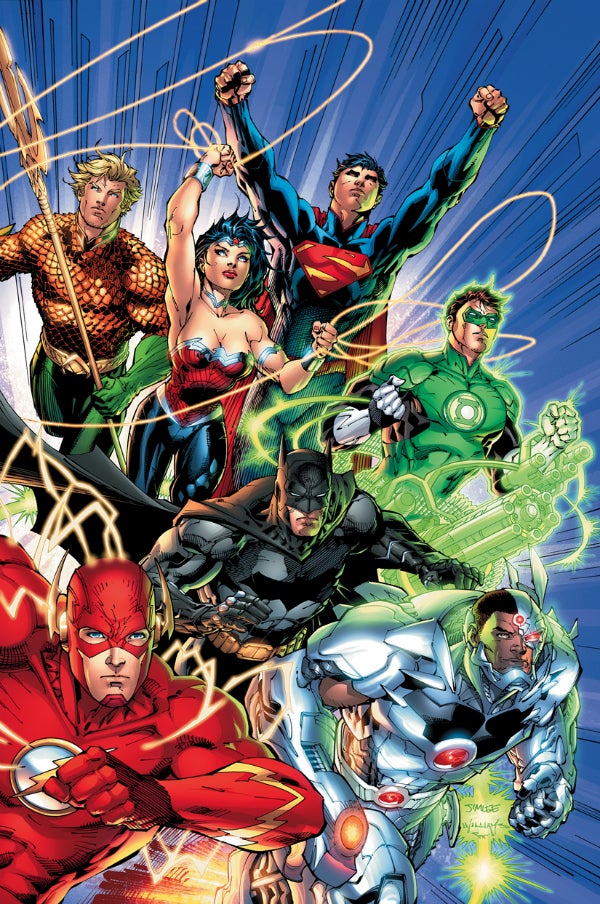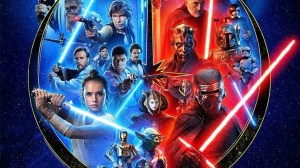
As the dynamics of the comic book industry have changed dramatically over the past 20 years, controversial storylines have become a dime a dozen phenomenon, especially as it pertains to some of the “Big Two’s” most popular properties. In recent memory, there has been a slew of incidents that have sparked outrage among fans and critics: the erasure of established continuity (aka, retcons), unpredictable and seemingly random deaths of characters, and out-of-whack characterizations that seem inherently untrue for iconic superheroes. While some of these events may initially spark sales for publishers, it’s arguable that many of these series and characters have undergone irreparable damage in the eyes of fans.
Videos by ComicBook.com
The increase in popularity of social media sites like Twitter and Tumblr over the past decade has only thrown more fuel on the fire for many of these controversies. Fans now have a public venue to interact with each other and comic book creators to rage about certain storylines. In some instances, fans have taken to these sites to not only voice their displeasure, but to also demand the firing of a creator or make inappropriate insults or threats against writers, artists and editors.
Here are 10 of the most controversial moments in comic books from the past 10 years – guaranteed to get your blood boiling if you happen to be a reader of any of these books.

10. Scarlet Witch/Quicksilver “Twincest”
When the Maximoff twins, Pietro and Wanda, better known as Quicksilver and Scarlet Witch, were first introduced in Marvel’s Ultimate Universe by Mark Millar and Bryan Hitch, there seemed to be something a little bit “off” with their relationship. There was definitely some innuendo that the “closeness” between the two was maybe, quite possibly something more than the typical familial love between a brother and a sister. But nothing insidious was ever explicitly stated in the text because, ya know, that would be incest and that would be all sorts of wrong.
Once Jeph Loeb came along for The Ultimates 3 in 2008, subtext became text. In the first issue of the series, after Quicksilver threatens Captain America for interfering with he and his sister, Wasp tells Cap that the two “love each other.” When a befuddled Cap still doesn’t get what Wasp is saying, she goes a step further by replying, “It’s more than that. They’re in love.” And that’s how you get “twincest” in a comic book.

9. Superman Renounces His Citizenship
While the adage goes, “any press is good press,” the power that be at DC had to be a bit alarmed when one of the backup stories in their mega-sized Action Comics #900 ended up being the focal point of political punditry in April, 2011.
In the story “The Incident,” by David Goyer and Miguel Sepulveda, Superman, who once claimed he fought for “truth, justice and the American way,” takes a stand against American foreign policy and declares that he’s going to renounce his U.S. citizenship.
The comic caused uproar on political “news” shows across cable and radio. Hollywood publicist and Republican advocate Angie Meyer told FoxNews, “Superman’s current creators are belittling the United States as a whole.”
Less than a week after Action #700 was published, DC announced that “The Incident” was just a standlone story and that there would be no follow-up. In other words, “The Incident” was just a hypothetical look at what would happen if Superman renounced his citizenship and it didn’t actual tie-in established continuity.

8. Amazing Spider-Man #700 Reaction
The hysteria surrounding the events of 2012’s Amazing Spider-Man #700 is a perfect demonstration of the potential pratfalls that come with giving fans easy access to creators via social media outlets like Tumblr and Twitter. While some “trollish” fans have longed used these sites as an outlet to anonymously deride or insult a writer or artist, Peter Parker’s apparent “death” at the hands of his long-time rival Doctor Octopus (who had switched minds with Peter to become the Superior Spider-Man), brought about some pretty dark and twisted comments, including some actual death threats made towards Spidey scribe Dan Slott.
Slott, who was notorious for reposting or retweeting some negative fan rants about his work, took to Facebook in the aftermath of ASM #700 and told the public, “There is NO such thing as a ‘funny death threat.’” He then said that going forward he would report any threats of death or violence made towards him and that people having such an extreme reaction to the death of a fictitious character needed “help.”

7. Magneto is Xorn
Not In the midst of Grant Morrison’s acclaimed revamp of the X-Men franchise (entitled New X-Men) in the early/mid-2000s, a new masked mutant, Xorn, was introduced. The Chinese mutant with a star for a brain operated alongside the X-Men for a few years. But during the “Planet X” storyline, Xorn unmasks and reveals himself to be long-standing X-Men foe Magneto.
Magneto – who is suffering from the effects of a mind-altering mutant drug dubbed “Kick” – proceeds to go on a killing spree, fatally wounding Jean Grey before Wolverine appears to murder the villain. In the wake of this shocking turn of events, Magneto is later revealed to be alive in Chris Claremont’s Excalibur series. And while faking a popular character’s death is a fairly commonplace in comics, fans were really mixed up when Xorn returned in an issue of Chuck Austen’s X-Men. Per this new status quo, Magnet and Xorn were two separate people, effectively retconning Morrison’s entire storyline.
Morrison has said in subsequent interviews that he had always intended for Xorn to be Magneto. Meanwhile, Marvel never really provided fans with a clear and concise explanation for how Magneto and Xorn were actually two different people.

6. Holy Terror and All-Star Batman & Robin, the Boy Wonder
Both of these comics get equal billing because they show how the industry’s perception of iconic writer/artist Frank Miller has changed so dramatically over the past decade.
The All Star Batman & Robin, the Boy Wonder series matched Miller – arguably the most important Batman writer over the past 30 years – with industry superstar Jim Lee and was met with great anticipation upon its initial publication in 2005. However, the book outraged many fans and critics once they actually read it. Miller’s Batman was depicted as being incredibly violent, to the point of being a sociopath, and extraordinarily cruel to his sidekick Robin. He essentially tortures Robin, withholding food from him and telling him to catch and eat rats. In another scene, he calls his sidekick “retarded” before famously telling him “I’m the Goddamn Batman.” That last line is satirized to this day. But at the time there was legitimate shock from that a book this sadistic and bizarre was actually published under the Batman banner.
In 2011, Miller scripted and illustrated Holy Terror, which approached Islamic ideology with the emotional sensitivity, nuance and subtlety of an atomic bomb. Miller originally pitched his idea as being Batman against Islamic terrorists, but that concept was scrapped in favor of wholly original characters. While Miller himself described the book as being “propaganda,” it broadly depicts all Muslims as being anti-American terrorists worthy of being hacked up by the graphic novel’s hero.
To see a great like Miller fall this far is a controversy in itself, without even considering just how offensive these stories ended up being.

5. The New 52
DC raised plenty of eyebrows in 2011 when the company relaunched its entire line of comics under the “New 52” banner. While rebooted/rebranded series with new No. 1 issues is a popular practice in the comic book industry, what truly sparked controversy for DC was the associated consequences the New 52 wrought for iconic characters like Superman, Batman and others.
With the New 52, a number of important storylines from DC’s past were retconned out of existence, such as Superman’s marriage to Lois Lane, and the origins of such characters as Starfire, Guy Gardner and Tim Drake. Barbara Gordon, who was famously paralyzed by the Joker in Alan Moore’s Batman: The Killing Joke, had suddenly recovered. Some characters like Wally West, Cassandra Cain and Stephanie Brown had their histories erased. Meanwhile, Batman mostly retained his history.
DC’s seemingly random selection of continuity changing confused long-time readers who had a hard time keeping track of the New 52’s status quo. Others thought DC was ignoring decades of continuity in favor of a short-term sales bump.

4. Heroes Reborn
After the bursting of the comic book speculator bubble financially decimated the industry in the mid-90s, Marvel Comics was desperate to create intrigue (and sales) for some of its core books. As part of the “Onslaught” event, the Fantastic Four, Avengers and Doctor Doom were killed off in battle. The Fantastic Four, Iron Man, Captain America and Avengers series were then relaunched under the “Heroes Reborn” banner and the creative work for all four books was outsourced to the studios of artists Jim Lee and Rob Liefeld, who had left Marvel a few years earlier as part of the “Image Revolution” of 1992.
These “Heroes Reborn” titles reimagined the origins of all of these characters, erasing years of established continuity. Unfortunately for Marvel, this dramatic overhaul wasn’t as successful as it had envisioned. While some of the books experienced a slight uptick in sales, in some instances, namely Captain America – which was in the midst of the critically acclaimed Mark Waid/Ron Garney creative run before the plug was pulled in favor of Liefeld – fans outright rejected the book and sales declined.
The concept was scrapped about a year later when it was revealed that all of the deceased heroes were actually operating within a “pocket universe” created by Sue and Reed Richards’s son Franklin. The events of “Heroes Reborn” would hardly be mentioned again in terms of continuity.

3. Batwoman’s Non-Marriage
The controversy with this story has more to do with what wasn’t published. As part of the New 52 relaunch of Batwoman, lead character Kate Kane was engaged to her girlfriend Maggie Sawyer. Co-authors J.H. Williams and W. Haden Blackman fully intended to marry these two together until they suddenly quit the book in September, 2013, citing an editorial mandate from DC that forbade the marriage from ever happening.
The incident became a global phenomenon as news outlets from around the world reported on Williams and Blackman quitting with the general perception being that DC was anti-same sex marriage. DC would subsequently clarify its stance as not being against same sex marriage, but marriage, period. There’s certainly a precedent to the anti-marriage philosophy in the comic book industry (fans of Spider-Man say “hello”), but the whole Batwoman incident gave DC a black eye, especially in the LGBT community.

2. Ultimatum
As if romantically pairing off brother/sister Quicksilver and Scarlet Witch wasn’t curious enough (see entry No. 10), writer Jeph Loeb further infuriated Marvel’s Ultimate fanbase with the universe-changing Ultimatum event. This five issue miniseries follows Magneto’s attempt to destroy the world after the deaths of Quicksilver and Scarlet Witch (Magneto’s children). While Ultimatum’s inaugural issue was the best-selling comic of 2009, fans and critics quickly turned on the series for its bizarre and incredibly violent depiction of the Ultimate Universe.
Fan favorite characters were killed off in grotesque fashion. The Blob was found cannibalizing the corpse of the Wasp. Other characters are seen losing their heads, arms and other appendages.
Some critics have gone as far as to call Ultimatum one of the worst stories ever. Regardless of one’s opinion of the series, Marvel’s Ultimate Universe has arguably never been the same since the event, as most of the line has failed to gain traction saleswise. In fact, the Ultimate line just underwent another major shake-up in 2013 with Cataclysm, which united all remaining characters under there books: Miles Morales: The Ultimate Spider-Man, All-New Ultimates, and Ultimate FF (which will print its final issue in August).

1. One More Day
For readers who had endured a number of bizarre and frustrating storylines involving everyone’s favorite Friendly Neighborhood Spider-Man – the “Clone Saga,” “Chapter One,” and “Sins Past” are just a few storylines that send chills down people’s spines – “One More Day” could be viewed as the worst, and most damaging of the lot.
As part of an editorial mandate, Peter Parker’s long-standing marriage with Mary Jane Watson was to be reversed. But that wasn’t necessarily the straw that broke the proverbial camel’s back when it came to fan outrage towards “One More Day.” It was how the storyline went about dissolving the marriage that was so shocking.
In the aftermath of Civil War and Spider-Man’s unmasking, a sniper bullet meant for Spidey critically wounds Peter’s Aunt May. As May lies on the verge of death, Marvel’s version of the devil, Mephisto, offers Peter a choice: he can save his Aunt’s life (and reverse his unmasking) in exchange for wiping out his marriage to MJ.
In one fell swoop, nearly 20 years of established continuity was reversed, while fans were stunned that Peter – a character that has always been depicted as being ethical and principled – would actually make a deal with the devil.
Despite the fact that a number of worthwhile Spider-Man stories have been produced in the wake of “One More Day,” many readers dropped Amazing Spider-Man completely and have not returned. The Spider-Man universe has unquestionably undergone a lengthy rehabilitation since then and appears to be back on top of its game, but Peter’s deal with Mephisto is quite possibly the most controversial comic book storyline from the past 20 years.








